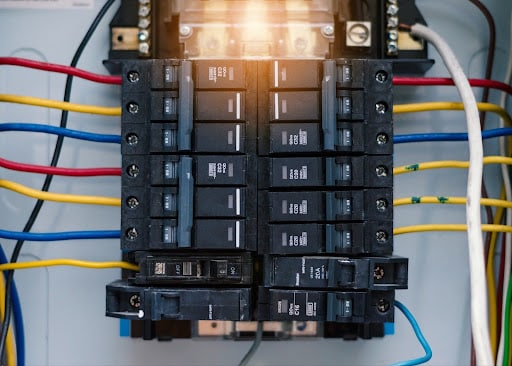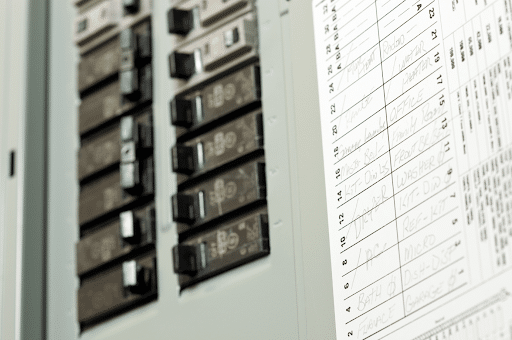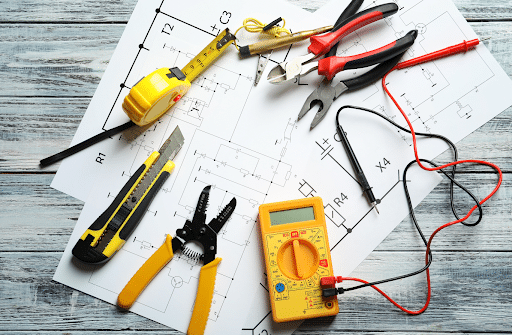
If you’re interested in understanding and possibly upgrading your home’s electrical system, you’ve come to the right place. This guide will help you dive deep into the world of circuit breakers – what they are, why they matter, the role of the electrical panel, and why modernizing your electrical box is worth considering.
What Makes Electrical Panels and Circuit Breakers Crucial for Your Home’s Electrical System?
An electrical panel, also known as a breaker panel or circuit breaker panel, acts as the central hub for your home’s electrical system. It routes power from the utility company safely throughout the house to the individual circuits. Inside the panel’s metal box are the circuit breakers controlling each circuit.
Circuit breakers serve a vital safety purpose by shutting off power to a circuit if it becomes overloaded. This prevents wires from overheating and reduces fire risk. Modern circuit panels also allow easy resetting of tripped breakers, as opposed to needing to replace a fuse.
Understanding the Role of Electrical Panels in Optimizing Electrical Current

The electrical panel manages the flow of power throughout your home to all of your various electrical fixtures. It does this by housing multiple branch circuit breakers, each protecting an individual circuit. For example, all the outlets in a bedroom may be wired through a single 15 amp circuit breaker.
This centralized design allows you to easily control and reset electrical flow to different parts of the house. The main breaker shuts power to the entire panel. Individual breakers can be switched on or off as needed to isolate circuits for maintenance or during an overload.
Modern load centers feature ample circuit breaker space and high amperage capacity to handle all the electrical needs of contemporary homes. Upgrading an old fuse box or small panel prevents the risk of overload from today’s power usage.
Circuit Breakers: A Vital Component of Your Home’s Electrical System
Circuit breakers are essential safety devices found inside the electrical panel which sever electrical flow in the event of a serious problem. They function by using a heat-sensitive switch mechanism that trips and flips the breaker to “off” if the current flow exceeds the safe capacity of the circuit wire.
This overload is often caused by a short circuit, damaged wire, faulty appliance, or too many devices running on one circuit. When a breaker trips, any outlets or fixtures on that circuit will lose power. Modern breakers allow you to easily switch them back on once any issues have been addressed.
Circuit breakers are designed to trip before wires get hot enough to start a fire. Upgrading old fuses or breakers to modern units provides vital protection according to your home’s current power needs. One way to make sure you don’t overload your system is to make sure your entire home is wired correctly, including using doorbell transformers.
Why is Replacing the Existing Panel with a Modern Circuit Breaker Panel Necessary?
Many older homes still have an outdated fuse box or small capacity electrical panel with little room for expansion. These legacy systems were only designed to handle the much lower energy needs of the past.
Today’s modern appliances and devices can easily overload an antiquated system. New construction wiring codes also require GFCI and AFCI advanced circuit breakers, which protect from electrocution and fire hazards. Replacing an old panel provides:
- Increased circuit capacity
- Additional breaker spaces
- Ability to add major new appliances
- Access to modern safety breakers
- Reliability of new components
How Does a Neutral Load Center Contribute to Efficient Circuit Management?
Table of Contents

The neutral bus bar is an essential component found in modern electrical panels. This heavy metal strip serves as the return path for electrical current after it powers devices and fixtures in the branch circuits.
Having an adequate neutral load center helps ensure balanced power distribution. Upgrading older panels often requires reconfiguring the neutral bus to properly handle higher electrical loads.
Simple Techniques for Installing a Neutral Load Center in Your Breaker Panel
When installing a new neutral bar, it’s important to follow manufacturer specifications and wiring codes. The key steps are:
- Select an appropriately sized pre-drilled neutral bus bar for the panel.
- Mount the bar securely on the insulated standoffs.
- Ensure the bar is properly grounded to the panel enclosure.
- Neatly connect all neutral return wires from circuits to the bar.
- Use a torque screwdriver to tighten connections to specified tightness.
- Ensure insulation covers all live parts.
Properly installing an adequate neutral load center when upgrading electrical panels keeps your home’s circuits balanced and running safely.
Why You Should Consider Upgrading Your Main Breaker Panel to Modern Circuit Breakers
Most homes built before the 1980s still have outdated electrical fuse boxes as their main breaker panel. While they were standard back then, fuse boxes have significant limitations compared to modern circuit breaker panels. Upgrading provides major safety and functionality benefits.
Fuse boxes rely on fuses that burn out when overloaded, requiring frequent replacement. Circuit breakers automatically trip and can be reset, avoiding this hassle. They also isolate overloads better, reducing fire risks. Furthermore, breaker panels allow easier expansion and typically support more circuits.
As your home’s electrical needs grow with new appliances, lighting fixtures, and devices, an upgraded breaker panel provides capacity for additional circuits. This avoids frustrating limitations like running out of open slots. Modern breaker panels also support vital new systems like EV chargers, heat pumps, and high-efficiency appliances.
Main Breaker Panels Vs. Large Breaker Panels
When upgrading your electrical panel, you’ll choose between a main breaker panel or a large breaker panel. While both use circuit breakers, there are some key differences:
A main breaker panel has a master shutoff switch that cuts power to the whole panel. This makes it easy to safely reset breakers and service the panel. Large breaker panels lack a main breaker so you must manually switch off individual breakers. Main breaker panels take up less space as the main breaker replaces multiple large feeder breakers. However, troubleshooting issues takes longer with a main shutoff. Large breaker panels allow for isolating specific circuits during repairs.
Helpful Tips for Main Breaker Panel Installation
Upgrading your home’s main breaker panel is best left to licensed electricians. However, some helpful tips can make the installation process smoother.
Carefully measure the breaker box to ensure it will fit in your existing space. Also, confirm it has adequate amps for your electrical service size and enough slots for current and future circuits. Label each circuit at both the breaker and outlet end. This avoids confusion when reconnecting wires to the new panel. Taking photos of the old wiring is also wise. Schedule the work when a power interruption is least disruptive, then be patient as the electrician safely transitions your electrical system over to the new breaker panel.
Helpful Guidance from High Performance Home
If you’re looking to learn more about home components like electrical panels, High Performance Home has a breadth of knowledge and insider insights about the home industry and its innovation. Browse our website to check out our blogs or learn more about our mission to connect stakeholders in the home industry to drive performance and development.
Frequently Asked Questions
What is the difference between a circuit breaker panel and an electrical panel?
A circuit breaker panel contains circuit breakers that trip and shut off power when overloaded, while an electrical panel connects the utility power supply to the branch circuits in a building.
Do electrical panels come with breakers?
Electrical panels often do come with some factory-installed breakers, though additional breakers must usually be purchased separately and installed as needed.
How do you know if a breaker is compatible with a panel?
To ensure compatibility, the amperage rating and physical size of a new breaker should match the specifications printed inside the panel, and the manufacturer should confirm compatibility for that specific panel model.
